-
When you click on links to various merchants on this site and make a purchase, this can result in this site earning a commission. Affiliate programs and affiliations include, but are not limited to, the eBay Partner Network.
-
Posts
1,113 -
Joined
-
Last visited
Content Type
Profiles
Forums
NGC Journals
Gallery
Events
Store
Downloads
Posts posted by 19Lyds
-
-
Maybe what you are missing is that those "hits/scrapes" you are talking about most definately are not hits or scrapes on the torch. Most coins that I've looked at from the same period have them. They are voids from where the metal didn't fill in the die completely when coin was minted. Had you been looking at the coin in hand, under light, you probably wouldn't have noticed them, but even if u did you would have known right away that they weren't "hits/scrapes". I don't know if any 1964 Kennedy halves exist without those same characteristics to some degree. They are also very commonly found on Franklin halves and especially early Franklin proofs. (50-51 mainly) although common on 53 & later.
They are clearly post-strike abrasions/hits. Either we're looking at different coins, or you need to get your eyes checked.
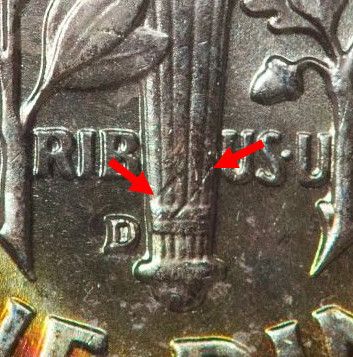
Thank you thats absolutely incorrect. Thanks for your pretty red arrows though.... those were exactly what I was talking about NOT BEING HITS, and they still arent.... I'll check my eyes if you go look at some coins... clearly you could use some experience.
Just to be clear, you are stating that those are not hits, but rather portions where the die failed to make contact with the planchet?
What conditions in your opinion cause this to happen? Something in the planchet; Something in the die? What causes the missed contact to create grooves of that shape?
Wouldn't the oppsite happen with no contact? Wouldn't there be raised planchet area since the rest of the coin is being struck and pressured out and down? No contact wouldnt push metal down more than areas around it with contact...
He may be implying transient annealing marks? But IMO, they do not look like typical annealing marks and I would expect that a strike that was full enough to produce the FB would be enough to eliminate any annealing marks.
-
Right - for enough $ PCGS will be happy to reholder a registry set with a special attribution label.
Any clue what the cost is?
To have "Just Having Fun" to the label is a free service PCGS offers to the top 5 sets in a series that have a certain number if coins registered in the set.
Specifically:
"If you participate in the PCGS Set Registry program your set may qualify for the free pedigree service. The free pedigree service policy is as follows:
The set must be 100% complete.
The set must be in the top 5 in the Registry.
PCGS does not pedigree modern Mint and Proof sets (1965-present), Everyman Collections or Low Ball sets.
Sets with less than 10 coins may be pedigreed if warranted. The decision will be that of PCGS experts.
The Registry member is responsible for shipping and handling costs.
The fee for pedigrees for upgrades to your set submitted after the initial pedigree is $10 a coin. PCGS will not pedigree duplicate coins. You must submit both the upgraded coin and the coin it will be replacing. The coin that will no longer remain in your set will be reholdered without the pedigree and returned to you along with the newly pedigreed coin. Your set must remain 100% complete and in the top five to qualify.
To confirm that your set qualifies for the free Pedigree Service, contact customer service at setregistry@collectors.com. Then mail with your coins a PCGS submission form and a printed page from the set registry that lists your set in the top five."
-
Still waiting for some snippy comments.
-
Regardless of your opinions of Dan's over strikes I don't think you can really challenge the real life experience he has. I think the saying "those who can, do. Those you can't, teach" Is very applicable here. It's unfortunate RWB bowed out of this conversation but he did hold true to one end of the obvious challenge from Dan to either put up or shut up. Thanks for the demonstration Dan, it doesn't look like those marks were "obliterated" to me.
Nick
The mint uses conical dies, which deform to flat. Dan used a flat die and put deep scratches into it. I don't see the issue as settled at all - merely obfuscated.
The average depth of the scratches is about 0.0015 inches. They are not "deep". Lathe marks on the conical die blank could easily be far deeper than that. The penetration of the "hub" in my test was about 0.050" on average (over 30 times the depth of the scratches).
And remember, the lathe lines seen on the struck coins in question are generally more visible towards the rim and less visible in the center. Due to the conical shape of the die blank, near the rim the depth of penetration of the hub into the die blank is not going to be much more than 0.050 inches, if that.
If you have some evidence to the contrary, please post it here for review.
Well Dan, it looks like you're going to have to come up with a softened conical die face to illustrate that which you already know.
-
Sorry, but if you read the text of Jason's page, it states:Never mind. I see that he is a co author of the following web page:
CONECA representatives offer the page below:
So.........I guess we must all live in "cocoons".
(waiting for a snippy response)
Both of those links repeat the traditional numismatic belief. What Roger is trying to do is to correct these beliefs, based on the research that he has done. When new research comes out, it makes sense to study and listen to it. You can choose to accept or reject it, but the old theory (represented in those links) must be examined in the light of the new data.
"Ken Potter, of CONECA, has stated that he had a conversation with a Philadelphia Mint spokesmen about the occurrence of these coins (K. Potter CONECA website),”…[the Mint Spokesman] suspected that they probably had not polished the die blanks sufficiently to remove all the lathe lines."
I've sent Mike Diamond a request to look at this thread and offer his opinions.
And its NOT that I am not open to new ideas regarding "numismyths" but some things have been said which simply are not true.
-
Soft die steel "mushes" under pressure. And, yes, die transfer is better called "pressing" or "squeezing" although the machinery used was a hydraulic press, coin products of which are commonly called "strikes." For the final time: one cannot transfer hub relief into die stock while also retaining finely detailed machining grooves.
As for counterfeiters - they operate in their own way and in their own tiny experiences; they clearly lack the training, experience and knowledge of US Mint diesinkers.
I've presented accurate information based on materials and processes used at the US Mint. Those who care to believe old numismyths, illogical hearsay, and hide in their cocoons may certainly do so.
Those who think the concentric grooves are remainders from machining die stock should ask the Philadelphia or Denver Mint Plant Managers about the phenomenon.
Don't you mean "softened die steel" vs "soft die steel"?
Also, coins are struck while dies are pressed. Both use a hydraulic press of sorts but one is a quick "blow" while the other is a slow squeeze.
Both cannot be referred to as strikes.
And for the record, Daniel Carr has a lot more experience than most give him credit for and will ever understand.
Maybe it's time for Mike Diamond to come in and offer a physiological perspective over what does and does not occur?
Never mind. I see that he is a co author of the following web page:
CONECA representatives offer the page below:
So.........I guess we must all live in "cocoons".
(waiting for a snippy response)
-
Because that's what they look like?I'll add another contribution to the discussion in that I think using the term "blow" is improper with regard to the hubbing process of die making as hubs are actually "pressed" into the Master Die surfaces. Often referred to as a "squeeze" instead of a "strike" (blow).The correct words help folks to better visualize the die making process.
BTW, here's an image of a nickel I pulled off of eBay:
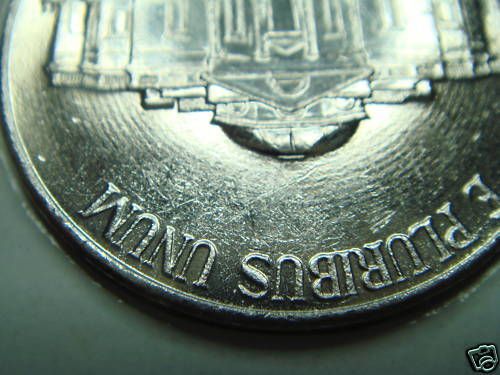
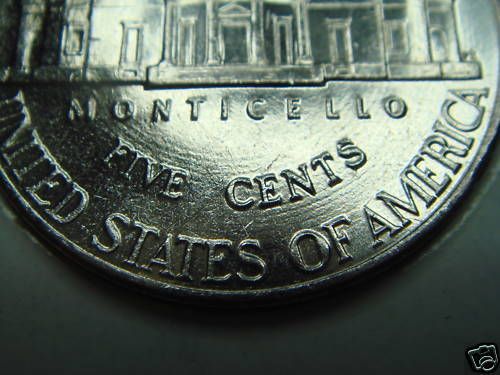
Why do these lines remind me of 'seismic waves'? Or a stone thrown into the water where the waves radiate outward in a concentric circle?
-
I'll add another contribution to the discussion in that I think using the term "blow" is improper with regard to the hubbing process of die making as hubs are actually "pressed" into the Master Die surfaces. Often referred to as a "squeeze" instead of a "strike" (blow).
The correct words help folks to better visualize the die making process.
BTW, here's an image of a nickel I pulled off of eBay:


-
I need to bookmark that page! Thanks!Question: When did the Denver Mint start 'single squeezing' their own dies?Also, check out this informative web page, pretty much covers die making processes from start to finish.
As for the lathe lines? My understanding is that these originate when the initial "cone shape" is created on the die face. These lines can be seen in a couple of the pictures from the above web page.

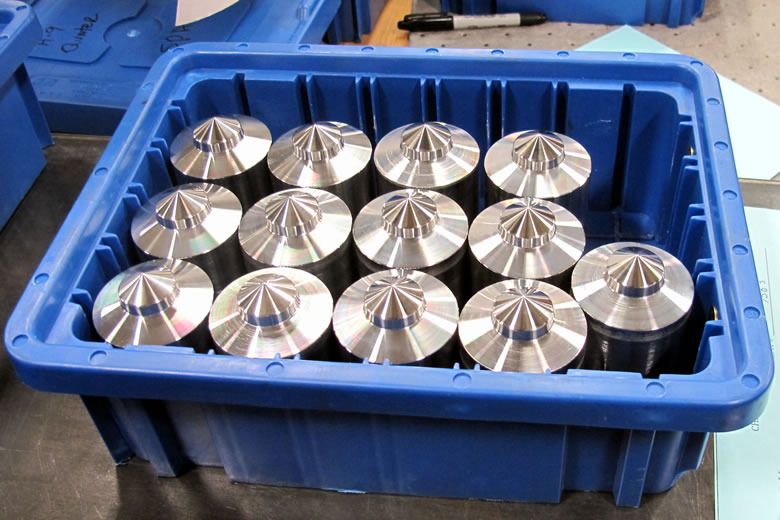
The obvious goal is to eliminate the lines from the finished die but that goal was obviously not met during the production of some dies. Quality inspections or not, occasionally the obvious escapes the US Mint during the die making process. Can you say "1955 Doubled Die"?
Can you say "New Employee meeting deadlines"?
-
Wasn't there some type of document destruction which occurred in the 70's referred to as the "Paperwork Elimination Act" or something like that?If the Clain-Stefanelli quote is accurate, any such coins must be compared to others in SI. As noted before, first strike coins will not look like normal circulation pieces.The "specimen" designation is probably reasonable, since they were clearly selected in some special way. My question is were the dies intentionally prepared to be different? If yes, then why; and where is the documentation to backup the multitude of claims about the "1964 SMS" pieces?
It does not matter though since the coins question have easily recognizable characteristics.
Again, I would suggest a detailed comparison of the NNC coins with known 1964 SMS coins to see if there is some type of connection.
I know that NGC did grade a bunch of these coins and am wondering if detailed photography exists.
At any rate, Roger asked "What evidence is there for 1964 "SMS" pieces being struck? I have not examined the extant mint documents at NARA, but I presume someone found letters or memoranda about the pieces." and I simply threw in this new discovery for the Modern Coins within the NNC.
-
Totally off the cuff, but I believe that these coins were produced for the national collection or at the very minimum with the dies and processes used for the coins intended for the national collection.What evidence is there for 1964 "SMS" pieces being struck? I have not examined the extant mint documents at NARA, but I presume someone found letters or memoranda about the pieces.Check out the Aug 5th, 2013 edition of Coin World. There is an article title "Hidden in Plain Sight" where researchers tasked with photographing the National Numismatic Collection (NNC) found that a great number of the modern coins submitted to the collection by the US Mint were in fact Special Finish Coins. Possibly actual "First Strike" modern coins.
Within that article is a photocopy of a memorandum date April 3, 1964 from then Smithsonian Curator, Y. Clain-Stefanelli, which states:
"All these coins are first strikes, selected in accordance with special arrangements made in 1962 with Miss Adams, Director of the Mint."
Since Eva Adams is "directly" tied to the 1864 SMS coins found in her estate after she passed away AND she is tied "directly" to an agreement that was made between the NNC and "special finish" coins, I see no reason to believe that the 1964 SMS Coins weren't actually intended for the Smithsonian or perhaps produced with the4 same manufacturing technique for some specific purpose under Miss Adams direction. How they ended up in her personal collection is quite a different question with its own innuendo's.
I did copy of one of the Kennedy's from that article just for discussions such as this:
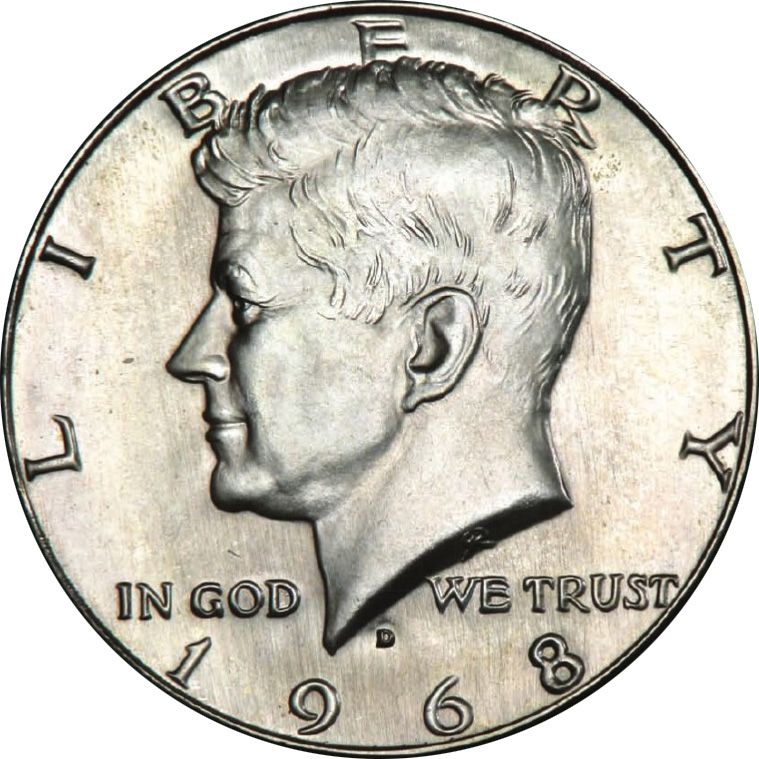
NGC ultimately graded each of the coins. This one graded SP67.
There you go Roger!
What should happen at this point, is more of a detailed study of the 1964 SMS Coins comparing them with the NNC Coins to see if the same dies were used on any of the 1964 examples.
-
Usually, since these coins have always sold for traditionally high prices, folks that have a compete set have sunk close to $50,000 into the 5 coins.Greetings,I happen to have a full set of the 1964 special strikes coin set. Can anyone tell me how much this set is worth.
I expect that you might simply have a 1964 Proof Set which folks buy and sell on a regular basis and quickly lose track of what was paid along with relative value.
-
PR70's are like getting chocolate on Halloween Night."A PR-70 is not just a perfectly preserved coin; it is also a perfectly made coin."True....and different from Dr. Sheldon's definition.
Some houses just give them out while others make you work for them.
And that's the truth! Pfffft!
-
Such as leaving them in the OGP.You might want to have them slabbed anyway just to protect them. I sent in an old mint set that belonged to my grandfather, not expecting high grades at all, but only to have them in a slab and protected.You can protect them, just fine, by other means, without that unnecessary expense.
Blindly submitting coins is a two edged sword in that a perfectly acceptable modern commemorative, suddenly becomes unsellable in a PR68 Slab. Not that it couldn't be sold but more like you'd hate selling it at such a low price.
Coins should always be prescreened prior to submission and not by someone who has no idea what to look for. The only thing they'd ever see would be a Perfect 70 since they'd have no basis for making a grading opinion.
-
I don't want to rain on your parade, but since it appears that it isn't a DDO or DDR and it appears to have some condition problems from circulation, I would put it's value at 25c.
Chris
Ithink this would be fair.
-

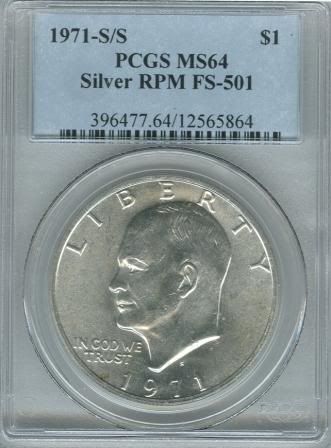
Picked up Raw at a local coin show.
-
-
19Lyds... Yes, I understand, and agree, with most everything in your post, but...
There is always the chance that, as new collectors "advance", they will become interested in the "roots" of Numismatics. I don't think anyone would argue against the fact that Large Cents were the start of it all, and, though Morgan "Toners" seem to be coming out of the woodwork lately, there is nothing that can match the subtle variations in each piece of early copper. Yes, I'm obviously biased, and yes, I hope the Large Cents stay undervalued, because I enjoy them and will never sell them anyway.....
I think you are absoultely correct in your assessment and I hope the same as well as I;d sure like to pick some up before well..............you know.........the chicken goes to the stew pot if you know what I mean!
-
"large cents vf and above"
I agree with Michael on the above, which happen to be my favorites. If the Large Cent series ever became as popular as the Morgan dollars, prices would be 10 times what they are today.
I think this would be true for ANY coin series which simply reflects the Market. Perhaps the Market could be more clearly defined if it were referred to as a Coin Popularity Index?
Popularity plays a very important roll in coin pricing which I exampled with the 1909S VDB illustration. Make folks think that they have to have the coin and the popularity goes up.
However, a lot of folks get into coin collecting based upon the "good Old Days" when silver was actually used in our country's coinage. I mean, both then and now, what better way to enjoy a hobby (and justifying its expense) than collecting something that can not only be spent at the local market (if need be) but also has intrinsic value due to precious metal content?
Unfortunately, neither nickel nor copper have attained the PM values or mystique that silver and gold currently hold therefore both the Eisenhower Dollar and the Large Cent series simply do not have the "draw", if you will, to attract new collectors. I would suspect that most collectors that are drawn into either series are drawn solely because of association with other collectors and the excitement they have for their collections. Their initial attraction to coin collecting is probably based upon something else. After all, folks don't just randonly collect stuff, they collect stuff that "means" something to them. That "meaning" could be anything from a memory to just seeing a bunch of coins laying around and wondering what you can do with them.
I am by no means a spring chicken and I do remember when silver was used in coinage and I do remember the problems encountered by the US Mint with the Eisenhower Dollars, so for me, IKEs represent a coin I "could have" pulled from circulation or "could have" gone to the bank and searched OBW rolls for pristine coins. However, there is no way I have the same "connection" with Large Cents therefore, since they do not have precious metal, the only draw that could possibly get me interested in the series is through association with you folks and the appreciation that the fellow Large Cent Collectors have.
In other words, if the Large Cent series is not popular to the masses by now, then it probably never will be.
The same could be said for the Eisenhower Dollar except for the fact that there are still many, many folks out there that can "relate" to the coin as a spendable issue that they perhaps spent as either a child or young adult. These people "could" get drawn into the series through association of their early lives as a memory of what used to be. I imagine the number of Eisenhower Dollar collectors could double in a month or so if ordinary folks actually realized that high grade common issues can and often due command 4 figure prices. With the right media attention, I'm sure that IKEs would come pouring out of the woodwork and bring with them a bunch of "new" collectors that "could" get interested in Large Cents!
-
I don't think there's such a thing as undervalued or overvalued. The market is what it is.
I disagree.
The market is a controlled entity which dictates to you what a coins price will be. If enough folks are led to believe that the HAVE to HAVE a certain coin, then the market will dictate the price whether the coin fits a pricing profile or not. Specifically meaning, low mintage/high grade/uncommon.
The 1909S VDB coin is a bit over valued because it has been successfully marketed and literally everybody wants one. It is "readily available" and hardly rare yet will set you back more than a thpusand just for an MS grade.
Contrast that with an 1875 3CN, mintage=228,000. Less than half the 09S VDB and yet it can be had for a couple of hundred in low MS.
I think I;d consider that one "undervalued" primarily because few people actually collect them vs the Lincoln.
Popularity = high price regardless of pricing profiles. Popularity is controlled by "the Market".
-
I'd have to say Eisenhower Dollars.
They represent the last of the "Large" dollar coins.
They come in two different metal compositions.
They have several obvious varieties which are eye recognizeable of which two are quite expensive in high grades if you consider MS66 to be a high grade!
Zero of the Copper Nickel coins have graded MS68 while a scant 101 have graded MS67 out of the millions that were produced.
Only 19 of the 40% Silver Clad Business Strikes have grade MS69 out of the millions that were produced!
There are MANY Doubled Die Obverses and MANY Doubled Die Reverses
There a MANY die state varieties
The documentation on the production of the coins is rarer than the rarest of the coins which makes the history of the coin and its production a bit of a mystery.
There are still many coins around from which to choose which leaves the series wide open for discovery.
-
Coins for which special care is taken, such as SMS or proof, usually don't receive strike designations because it is taken for granted that they are usually better struck.
That may be true but if it were really the case, why do the 1994-P and 1997-P Jeffersons, which are SMS in PCGS's house and SP in NGC's house, get designated with Full Step?
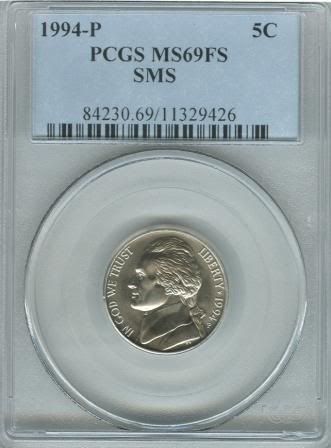
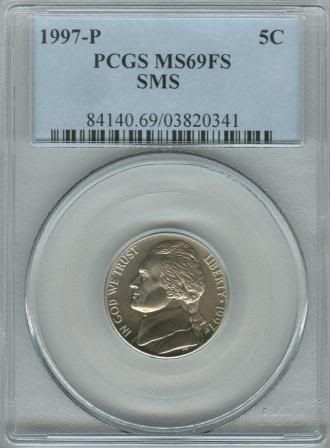
-
Picked up this 1959 Type B Reverse at the Santa Clara Show:
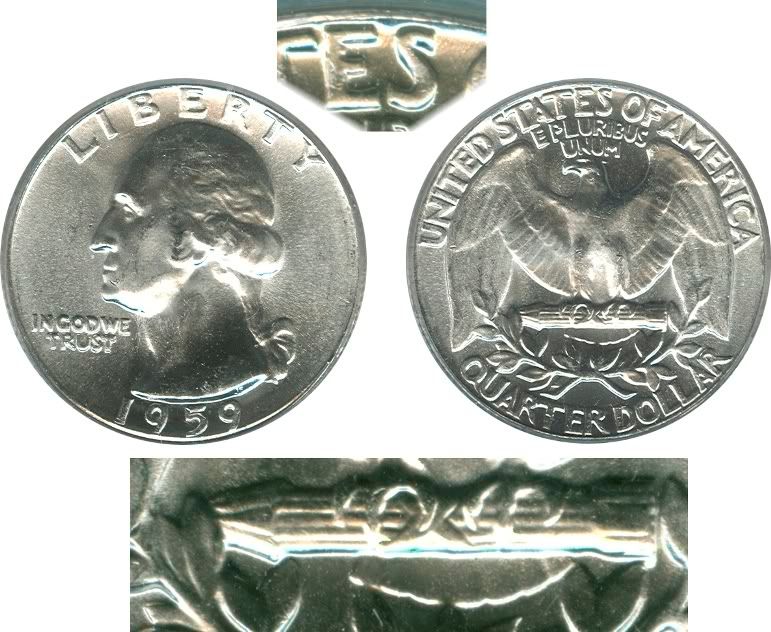
This 1964-D Type C Washington arrived on Saturday:
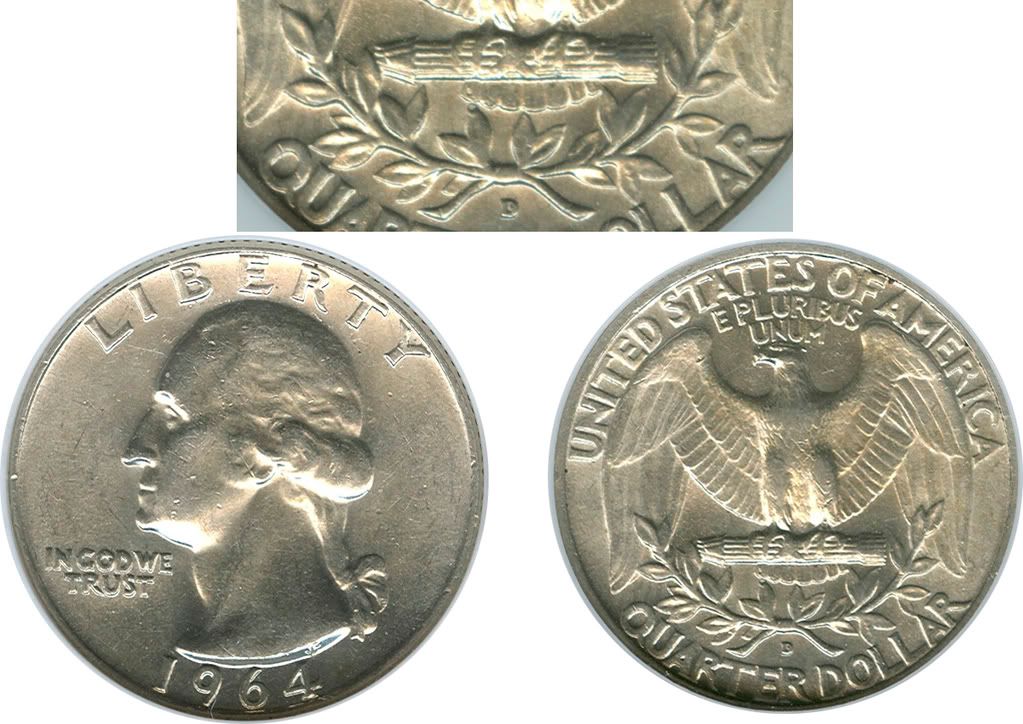
Getting close to having one of each of the Type B Reverse Washington's.........
-
Nothing too spectacular:
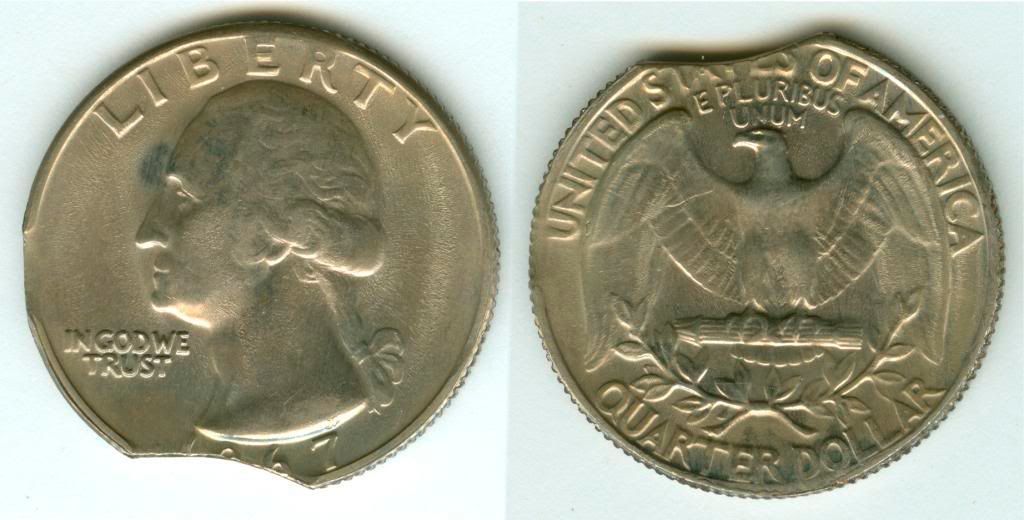
This one I really like:
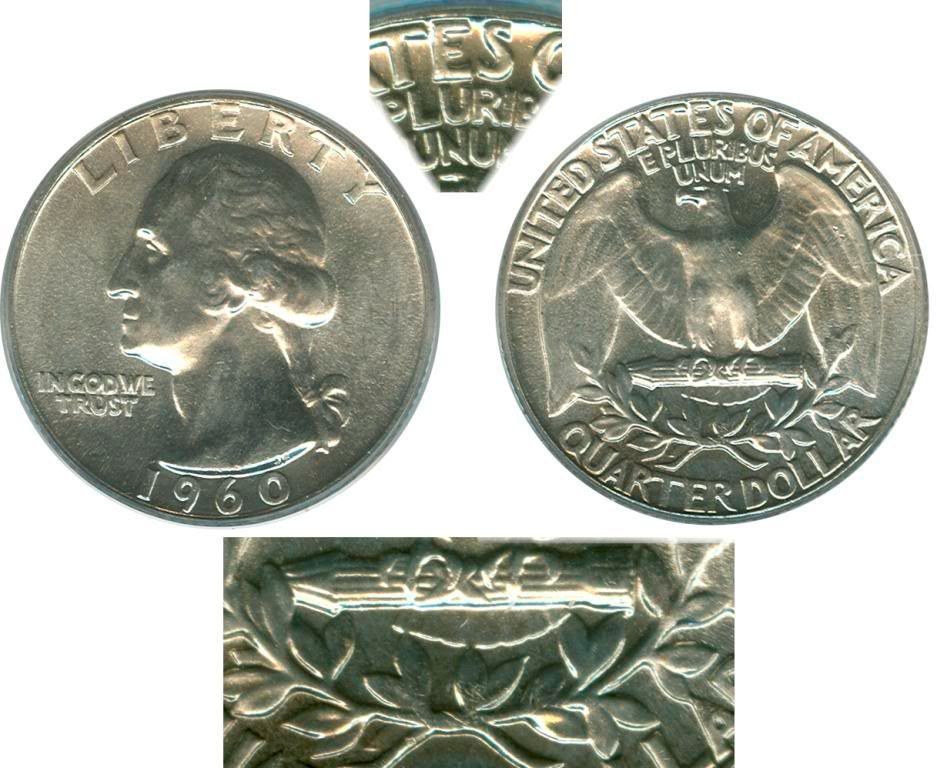




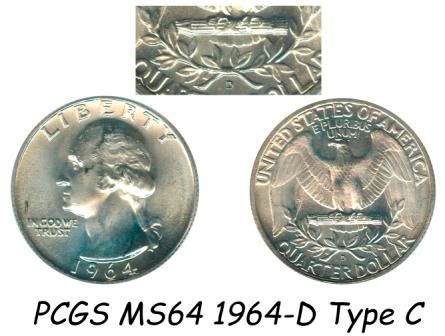
Dcarr over strike question.
in US, World, and Ancient Coins
Posted
Yeah! Like the fella that bought the 09-SVDB that was the size of a cup coaster!